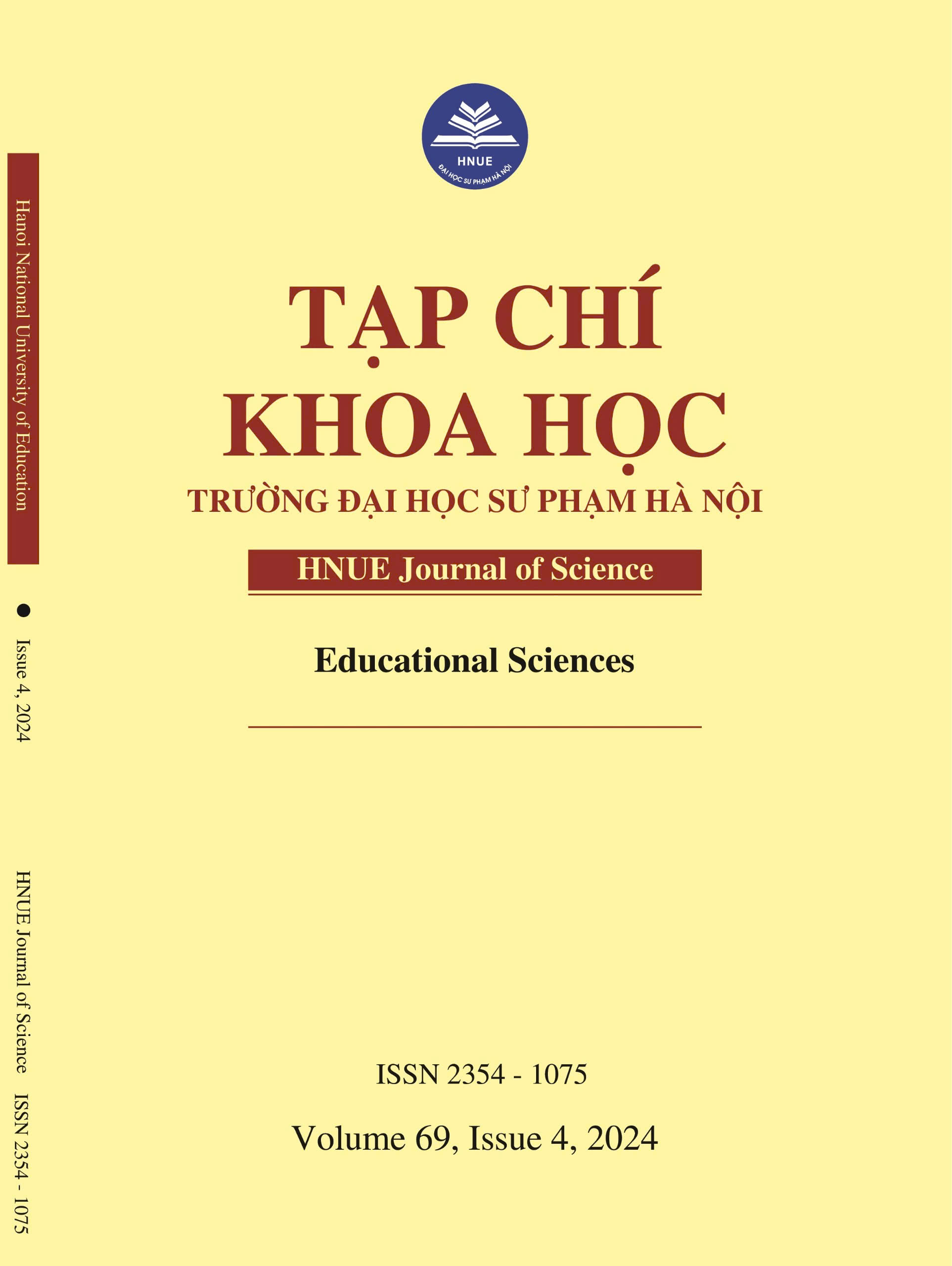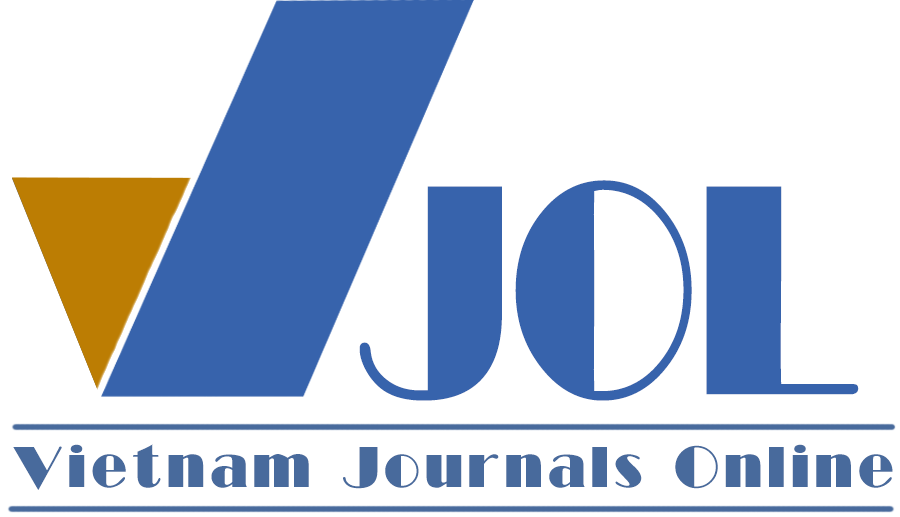RESEARCHING THE EXPERIENCE OF SOME COUNTRIES ON SUPPORTING MEASURES FOR STUDENTS IN SELECTING CAREER-ORIENTED SUBJECTS IN IMPLEMENTING THE GENERAL EDUCATION CURRICULUM
DOI:
https://doi.org/10.18173/2354-1075.2024-0072Keywords:
career orientation, choosing selected subjects, General Education CurriculumAbstract
Career orientation for students plays an important role and is the basis for students to choose appropriate elective subjects at the high school level, according to the General Education Curriculum 2018. The purpose of this research is to examine the experience of some countries in supporting students in choosing career-oriented subjects. This study investigated general education curriculum and solutions to support students in choosing subjects in several countries, such as the US, Germany, Netherlands, Norway, Australia, Singapore, and Japan. The results of this study include: 1) analyzing career-oriented goals in the general education curriculum and supporting measures for students in career-oriented subject selection in some countries around the world; 2) proposing some lessons learned for Vietnam in supporting students in choosing career-oriented subjects in implementing the General Education Curriculum 2018.
Downloads
References
[1] Klapwijk R & Rommes E, (2009). Career orientation of secondary school students (m/f) in the Netherlands. International Journal of Technology and Design Education. 19(4), 403–418. DOI 10.1007/s10798-009-9095-7.
[2] Truong TH, (2020), Career orientation of current high school students. Journal of Social Sciences Information. (3), p. 39-45. (In Vietnamese)
[3] Bazine N, Chénard-Poirier LA, Battistelli A & LagabrielleM, (2023). Who is successful in career development? A person-centered approach to the study of career orientation profiles. Career Development International, 28 (67), p. 772-792. DOI 10.1108/CDI-11-2022-0301.
[4] Vietnam Ministry of Education and Training, (2018). The General Education Curriculum. [5] Köller, Baumert &Schnabel, (2001). Does Interest Matter? The Relationship between Academic Interest and Achievement in Mathematics. Journal for Research in Mathematics Education 32(5), p. 448-470.
[6] Aeschlimann B, Herzog W & Makarova E, (2016). How to foster students’ motivation in mathematics and science classes and promote students’ STEM career choices. A study in Swiss high schools. International Journal of Educational Research, Vol 79, p. 31-41. [7] Archer, DeWitt & Dillon, (2014). High Aspirations but Low Progression: the Science ASPIRATIONS-CAREERS Paradox amongst Minority Ethnic Students. International Journal of Science and Mathematics Education, 9(2), p. 243-271.
[8] Bernacki, Nokes-Malach, Richey & Belenky, (2017). Comparing Class- and Task-Level Measures of Achievement Goals. The Journal of Experimental Education, 86(2), p. 1-19.
[9] Rozek CS, Hyde JS, Svoboda RC, Hulleman CS & Harackiewicz JM, (2015). Gender differences in the effects of a utility-value intervention to help parents motivate adolescents in mathematics and science. Journal of Educational Psychology, 107(1), 195–206.
[10] Ho THV, Le NG & Dinh QB, (2023). Possibilities for promoting students’ career-oriented competencies by organizing the 5E model and experiential teaching. HNUE Journal of Science, Educational Sciences, 68(3), p. 211-223.
[11] Hipkins R, Vaughan K, Beals F, Ferral H & Gardiner B, (2005). Shaping our futures: Meeting secondary students’ learning needs in a time of evolving qualifications. Final report of the Learning Curves project. Wellington: New Zealand Council for Educational Research. Retrieved from https:// www.nzcer.org.nz/category/research-project/learning-curves-meeting-student-needs-evolvingqualifications-regime.
[12] Tan E, (2002). Career guidance in Singapore schools. the National Institute of Education, Nanyang Technological University in Singapore.
[13] Singapore Ministry of Education, (1994). Pastoral care: A sharper focus-A handbook for principals and teachers.
[14] Rogers B, (1984). Careers education and guidance. Cambridge, England: Hobsons Publishing
[15] Ong TC & Chia LHL, (1994). The pastoral care and career guidance in an independent school in Singapore. London: Cassell, p. 87-101.
[16] Nguyen TKD, (2019). Experience in organizing elective teaching in Australian high schools and some suggestions for Vietnam. Journal of Educational Sciences, No. 16,
[17] Johnson SM & Williams VJ, (2018). The role of career and technical education in preparing middle school students for STEM careers. Middle School Journal, 49(4), p. 25-33.
[18] Smith KR, Johnson SM & Williams VJ, (2020). Middle school students’ perceptions of STEM careers: The impact of school-based programs. International Journal of STEM Education, 7(16), p. 1-12.
[19] Clark KM & Kelly P, (2019). Mathematical pathways to careers. Routledge.
[20] Thompson BK, Williams SJ & Thompson JA, (2020). Integrating career education into the music curriculum. Music Educators Journal, 106(3), p. 42-52.
[21] Anderson JA & Martinez SR, (2021). Career Awareness through Social Studies: Engaging Students in STEM and Career Exploration. National Council for the Social Studies.
[22] Weber MF, Johnson SM & Williams VJ, (2017). Dual System and Its Impact on STEM Education in Middle Schools. International Perspectives on STEM Education, p. 147-162.
[23] Schmidt, (2019). Vocational Orientation in STEM: Insights from the Dual System. Springer Verlag.
[24] Müller P, Seufert S & Baumert C, (2018). Vocational education in a changing world. Springer Verlag.
[25] Rottinghaus, Patrick & Lindley, (2002). Educational Aspirations: The Contribution of Personality, Self-Efficacy, and Interests. Journal of Vocational Behavior, 61,1-19. DOI:10.1006/jvbe.2001.1843.
[26] Tanaka N, Fujita M & Makino K, (2018). Career guidance through integrated science education. Advances in science education research, p. 279-295.
[27] Nakamura T, (2019). Mathematics education and career pathways. International Perspectives on Mathematics Education, 215-232.
[28] Saito Y, Hargreaves D & McPherson G, (2020). Music Education and Career Development. Routledge.
[29] Yamamoto K & Suzuki A, (2021). Social studies and career exploration: Engaging students in their future. Routledge.
[30] Nguyen TKN & Luong TTV, (2018). Research on evaluating factors affecting the career orientation of high school students in Nghe An. Vietnam Journal of Education, (431) (Section 1 - June 2018) (in Vietnamese).
[31] Le TD, (2020). Developing career-oriented capacity for high school students. PhD thesis in Educational Sciences. Vietnam Institute of Educational Sciences (in Vietnamese).







